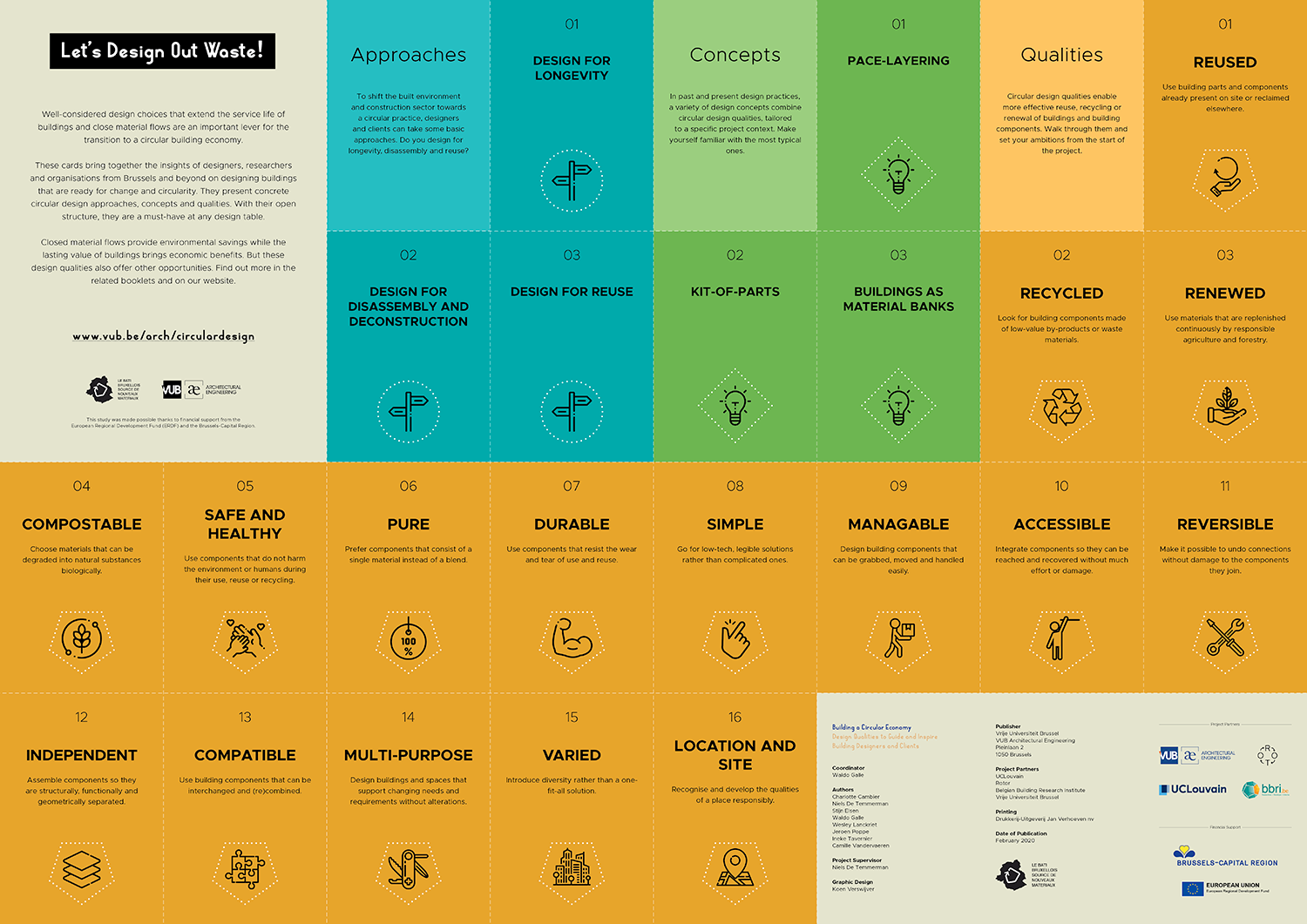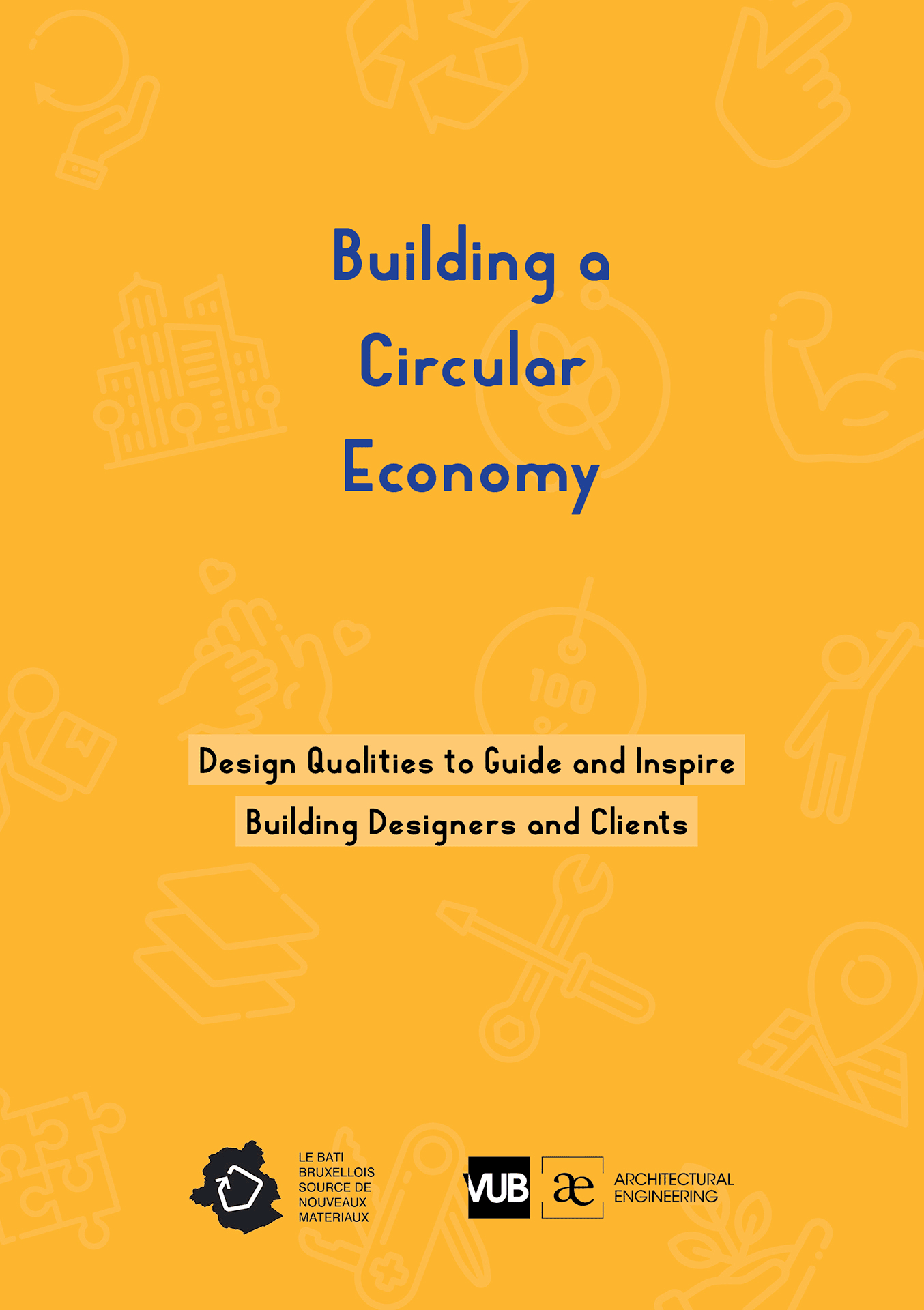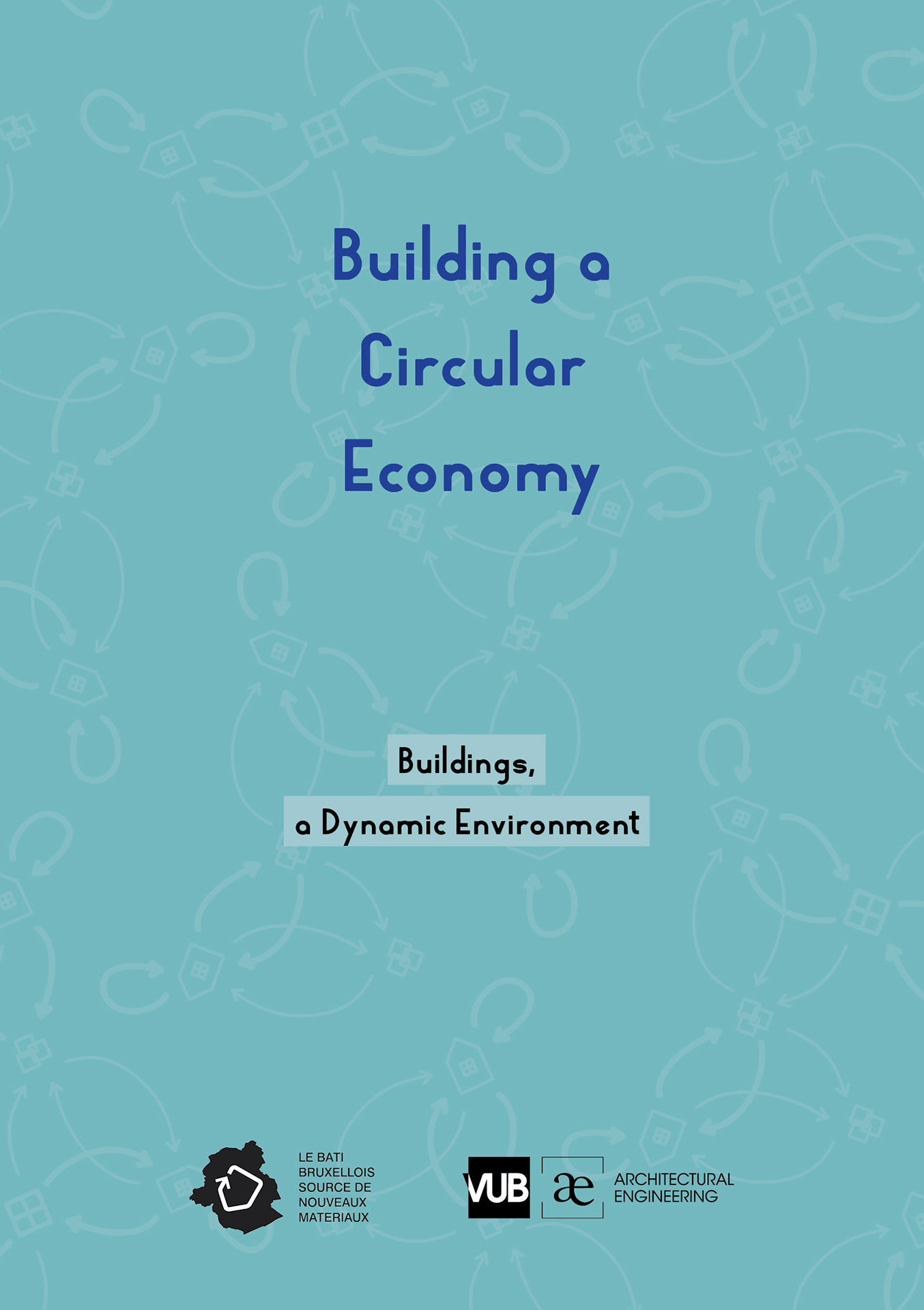Today, more than ever, circular construction is on the agenda. It is embedded in European, national and regional policy, and is addressed in private and public design assignments. How, What, Why? Well, through well-thought and informed design choices, circular material flows can be enabled and encouraged. So, let’s design out waste!
How do you design for change?
In four steps it is possible to make well-considered design choices that extend the service life of buildings and close material flows. Download the toolkit, walk with the design team through these steps, and formulate together a clear-cut answer.
Step 1. The approach
Analyse the assignment and context and select the most appropriate design approach. Do you design and build for longevity, disassembly or reuse?
Step 2. The qualities
Select the design qualities that support your design approach. Review how for example reused components, compostable materials or reversible connections support your ambitions.
Step 3. The concept
Bring your choices together in a concise concept. Does pace layering, or buildings as material banks mean something to you? Or do you have your own concept at hand?
Step 4. The next level
Find out what the role of the two other approaches could be, and use them for specific building components or design aspects. Select the corresponding qualities and concepts.
Download the tool in your language:
Circulair ontwerpen in vier stappen - NL
 Denim insulation made of old jeans is safe and can be installed without wearing a mask. Photo: Arnaud Bouissou, Terra.
Denim insulation made of old jeans is safe and can be installed without wearing a mask. Photo: Arnaud Bouissou, Terra.
What makes a building circular?
Design choices are key in the transition towards a circular construction economy. In this guide you find the insights and experiences of design practitioners, clients and researchers from Brussels and beyond on designing buildings that are prepared for change and circularity.
Sixteen design qualities
Circular design qualities enable more effective reuse, recycling or renewal of buildings and building components. Walk through them and do the check.
A variety of design concepts
A variety of design concepts combine multiple circular design qualities, tailored to a specific project context. Make yourself familiar with the most iconic cases.
And many more options
Finally, a series of strategic options brings the implementation of each design quality that last step closer. Create yourself the right conditions for a successful ‘circular’ building.
Download the design guide in your language:
Design Qualities to Guide and Inspire Building Designers and Clients - EN
Ontwerpkwaliteiten om Architecten en Opdrachtgevers te Begeleiden en Inspireren - NL
Des Critères de Conception pour Guider et Inspirer - FR
 The former Belle-Vue brewery (L’Escaut architectures) could be redeveloped thanks to its qualitative site and location. Photo: François Lichtlé.
The former Belle-Vue brewery (L’Escaut architectures) could be redeveloped thanks to its qualitative site and location. Photo: François Lichtlé.
Why does circular design matter?
Buildings are all around us and form a dynamic environment in which – and through which – we interact. The dynamism of the built environment has significant consequences on resource consumption and, therefore, the environment we inhabit.
Questioning an unsustainable model
Some buildings are cherished forever, while others do not last long. Find out how our constantly changing needs and standards put pressure on the built and natural environment.
Understanding who might profit
In construction, many actors are involved. Five Brussels testimonials illustrate their interest in a circular built environment: a developer, designer, manufacturer, investor and policy maker.
Opportunity, or yet another constraint?
Finally, new policy guidelines and client requirements are gradually changing the architect’s role. An opportunity to redefine the designer’s profession in line with the 21ste century.
Download the vision document in your language:
Buildings, a Dynamic Environment - EN
Gebouwen, een Dynamische Omgeving - NL
Le Bâti, un Environnement Dynamique - FR
 This hunting lodge (BC architects & studies) is built of rammed earth, locally sourced and pure. Photo: BC architects & studies, BC materials.
This hunting lodge (BC architects & studies) is built of rammed earth, locally sourced and pure. Photo: BC architects & studies, BC materials.
Interested in more insights? Find out related research projects on the dedicated website.
Looking for project guidance or a tailored lecture? Our team of experts might help you out.
Research consultancy and services
Ready to bring circular design into practice, or in need of that extra boost?
Register for our learning network

Colophon
Building a Circular Economy
This research is made possible thanks to the Financial support of the European Regional Development Fund (ERDF) and the Brussels-Capital Region for the research project Le Bâti Bruxellois : Source de nouveaux Matériaux (BBSM). We thank all designers, experts and policy makers for their participation in this research. Gratitude goes to Project partners UCLouvain, Rotor, and Belgian Building Research Institute.
Coordinator Waldo Galle, Authors Charlotte Cambier, Niels De Temmerman, Stijn Elsen, Waldo Galle, Wesley Lanckriet, Jeroen Poppe, Ineke Tavernier, Camille Vandervaeren, Project Supervisor Niels De Temmerman, Graphic Design Koen Verswijver, Publisher Vrije Universiteit Brussel, VUB Architectural Engineering, Pleinlaan 2, 1050 Brussels, ISBN 978-94-91912-13-9, Date of Publication October 2019.




